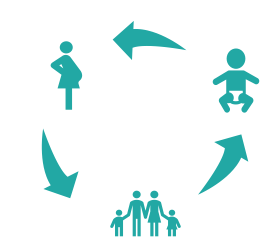Conversations between parents and the MPS Society suggested newborns with MPS disorders tend to be heavy. The MPS Society wondered at what point children with MPS go from an above to a below average growth and if there are any anomalies in milestones, which together could demonstrate a pattern indicating an early marker of an MPS disorder. Sanofi awarded the MPS Society a Patient Advocacy Leadership Award to research possible early indicators of MPS disorders to be able to improve and facilitate the diagnosis pathway of patients. If general practitioners and clinicians are alert to signs of MPS disorders in children, patients could benefit from an early diagnosis and improve their long-term prognosis.

The UK’s Personal Child Health Record, or ‘Red Book’ as it is more commonly called, is given to parents/carers at a child’s birth. Healthcare professionals update the record with measures of growth and milestones each time the child is seen in a healthcare setting for the first few years of their life. This study involved an online survey to collect these Red Book records from participants recruited via MPS Society’s membership. The MPS Society enlisted Rare Disease Research Partners* to conduct this project.
Objectives
The objectives of the project were to:
Examine early characteristics of children with MPS disorder (from pregnancy to childbirth, to developmental milestones)
Identify patterns of birth characteristics and growth (weight, length, head circumference) in newborns/ children with MPS disorder
Main findings
Data on pregnancy and birth did not show any specific patterns
Most MPS disorders showed signs and symptoms of the disorder within the first year
MPS I Hurler had the most signs within the first year and also had the quickest diagnosis (average of 9 months)
MPS II Hunter had the fewest signs within the first year and the longest time to diagnosis (average of over 4 years)
58% of children were diagnosed after 2 years, which has implications for potential treatment. For example, some gene therapies prefer children to be under 2 years of age and for ERT or bone marrow transplant to be the most effective, the earlier the diagnosis the better
Growth charts showed that children with some MPS disorders are heavy, long and have a within-range head circumference at birth, then drop off the growth charts, e.g. MPS I Hurler, MPS IVA Morquio, while other disorders do not show any anomalies on the growth charts within the first years, e.g. MPS III Sanfilippo
*MPS Commercial is a Private Limited Company Registered No 08621283. MPS Commercial trades as Rare Disease Research Partners and is a wholly-owned, not-for-profit subsidiary of the Society for Mucopolysaccharide Diseases (the MPS Society), Registered Charity in England and Wales No. 1143472. Rare Disease Research Partners social objectives are to reinvest any surplus to support the mission of the MPS Society to transform the lives of patients through specialist knowledge, support, advocacy and research.



